This means, however, that streets to the west of it have treasure troves of Mid-Century Modernism.
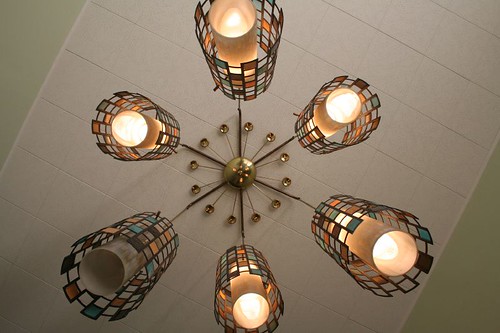
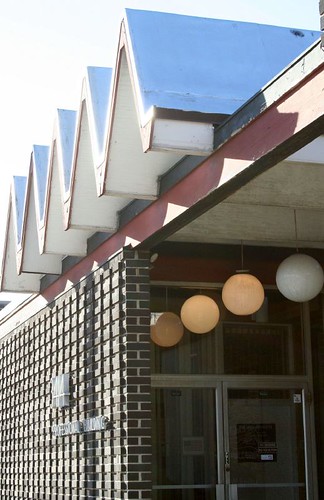
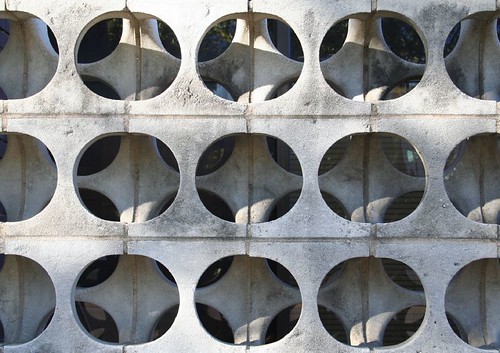
Peterson Avenue, west of Western, offers one 1960s building after another, with a nearly complete array of the stock design elements and styles common to the period. Delicious details abound, easily overlooked as motorists zoom past at 50mph, but easily found if you make the trip by foot or bike.
Colored glazed brick, raised metal letters, funky stainless steel railings, crazy hanging lamps in the lobby, jagged fieldstone contained in limestone borders on brick walls... it's all here.

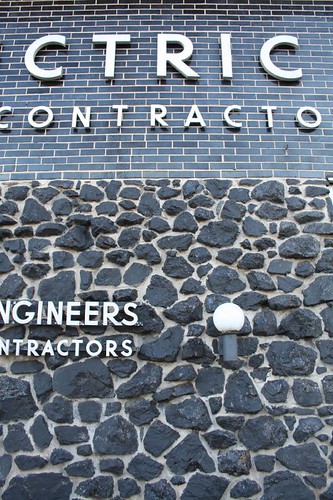
Even the side streets offer the occasional find:
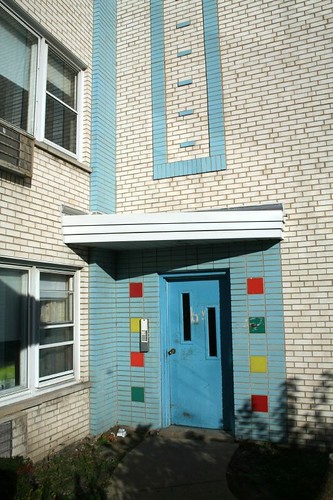
And sometimes, the MCM creeps east of Western:
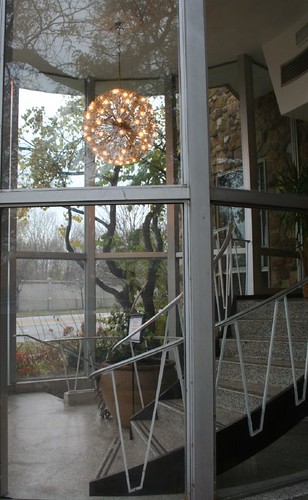
There's no knockout buildings out here, nothing to make a MCM preservationist stand on the mountaintops and shout; instead, there's a collection of buildings that reinforce each other, crying out the optimism and elegance of the 1960s, achieving far more together than any one of them does alone.
5 comments:
Rob--left you a message at your "built st louis" address, but wasn't sure it was still active. Drop me a line regarding photos for my book.
Colin Gordon
I love the buildings down Peterson! I have been wanting to do a feature on them for a long time. Each one has its own charm and grace of the 60s as you said so well.
I admire your St Louis site, but if you are now lving here and going to be an advocate and posting things about Chicago, then please learn about ALL of it, and the NE IL region.
I take issue with your assumption that west of Western Av is "where the city's urban environment begins to weaken, falling apart into 1950s suburbia." That is dead wrong!
Many residential areas, business districts, and walkable communities existed past Western Av and in Cook and the collar counties long before 1950 and as far back as the founding of Chicago in 1837. And back then Chicgo was just one of many NE IL towns founded back then.
Ever hear of Humboult Park? Austin, Garfield Park, Portage Park? Norword Park? They were aeas of the city west of the 'Yuppie Boundry line' and settled in the late 1800s to 1920s!
Chicagoland is full of areas clustered by train stations that were early suburbs. So no, not everyone lived along the lakefront in 6 flats before WW2, and then moved west in the 50's, the biggest myth about this area.
Also, Lakeview, Rogers Park, Edgewater, and many other 'true city' north side neighborhoods were actual SUBURBS before annexation in 1889!
I grew up in the real working class areas city, the bungalow belt built up between 1880s to 1920's. So, please look at old maps and do some more exploring to see that the north side lakefront not the only part of Chicago.
Tom
tomcatt630@yahoo.com
@ tomcat:
Cut me a little slack! I'm still very new to Chicago. It's a huge, huge city and getting to know it all is a nearly impossible task. For just approaching the 6 month mark, I'm think I'm doing reasonably well.
I hope it's obvious from my entries (and my Flickr photos) that I'm making an effort to range far and wide, and see and photograph a lot of different areas. Putting all the pieces together takes time, though, and the sheer size of the city means that there are many places that I can't get to very often.
Western is most certainly the clear dividing line in my part of town. As I'm finding out, that becomes less true as one moves south -- but the style of development on Western itself, with so many car dealerships and parking lots, often makes it look like it's all one endless suburb.
These oddities may charm us today, only because of their age, but they are really ugly.
1950s urban planners would agree with your description... of the "obsolete", "blighted", "dark", "heavy", "firetrap" Victorian-era homes that they had a heavy hand in tearing down. They said the exact same thing. Careful what you wish for!
Post a Comment